To deem a commercial success as falling a bit short might sound strange, but that’s very much the story of the Ferrari California, at least from the purist point of view. The four-seater drop top scored many firsts for the brand – front-engined V8, seven-speed dual-clutch transmission, folding hard top – and opened the door to plenty of new customers for the brand, but never quite achieved true endearment with hardcore fans, who viewed it as dilution of what the Prancing Horse represented.
Most lamented the languid focus, permeating through in both disposition and dynamics. Nevermind that many who bought the car loved it for the accessibility it provided, a Ferrari you didn’t have to be Fangio in each time, all the time. That the Cali found favour with plenty of ladies, helped no doubt by the siren song of the topless route, probably made it all the more grating.
The facelift that arrived in 2014 attempted to address most of the issues – new, tauter-looking skin found its way on, turbocharging added potency, and an optional handling pack sharpened driving performance. And yet, the F149M largely continued to be viewed by the purist crowd like it was when it first appeared, with a bit of contempt, a girly sort of car.
Of course, finding its way to 17,000 buyers throughout its lifespan meant that such brickbats could be ignored, and there was always going to be take two in the same vein, just better presented to capture more hearts and, this time, minds. It comes in the form of the Portofino, which is named after a city on the Italian Riviera in the Liguria region.
The promise is a faster, more technically-capable offering, accomplished without any sacrifice in comfort and accessibility. Does the new one finally nail it in terms of gaining respect from the enthusiasts? Two samplings of the car – in both drive configurations – reveal all.
Though the styling has been comprehensively reworked, there’s very little change dimensionally. At 4,586 mm long, 1,938 mm wide and 1,318 mm tall, the F164 is just 17 mm longer, 28 mm wider and four mm lower than the Cali T. Interestingly, it actually sits about a centimetre higher than the original California, but such is the improved styling scope that it looks much lower. Wheelbase length remains unchanged at 2,670 mm.
Tipping the scales at 1,664 kg, the Portofino is around 80 kg lighter than its predecessor, with 40% of that reduction coming from chassis and bodyshell revisions and 30% from the interior, the rest being made up of changes to the engine, exterior and electronics.
It’s also stiffer, with static torsional rigidity up by 35%, aided by the increased use of integrated component castings for the body structure. For example, the A-post reduces component numbers from 21 in the California T to just two here, and the new car also features a 30% reduction in the length of welding joints.
All that is of course hidden away, and the biggest gains have come from the improved aesthetics of the design. Some of the contention with the original California was with its looks, which attempted to float the front to match the raised haunches of the rear, not always in seamless fashion to sight, especially from the rear and with the top up.
Just before its debut, I saw it in finished form at the Ferrari factory in 2008, and was struck by how bulbous it was. Subsequent viewing made it easier on the eye, but in truth it was never a looker you’d gawk at.
The Cali T introduced new sheet-metal, which cleaned up things considerably, but you just have to look at the Portofino to see how much progress has been made in dollying it up. The new Daytona-inspired suit is much sharper-looking, and resolves much of the front-to-rear integration and flow. Although the rear continues to be rather familiar, styling cues help create a flatter, lower look.
The bulk created by the high boot-lid – continuing to be necessary as such to accommodate the folding hardtop – is less evident, the sight aided further by spacing the round tail lights further apart. The same is applied in front, with a wide front grille and horizontal design LED headlights helping to reduce the visual height perspective.
The overall presentation is lifted considerably with the new retractable hardtop roof, which can now be raised and lowered in 14 seconds on the move at low speeds. It’s not just lighter than before but much sleeker, and the fastback look presented by it reduces the swell of the rear when deployed, giving the car a very sporty, rakish profile. It’s not always the case that cabriolets look better with the top up, but this one arguably is, a proper-looking coupe and elegant spider in one package.
Aside from the exterior work, aerodynamics have also been improved – the radiator outlets have been reshaped and rearranged to maximise underbody aero efficiency, and the front diffuser has been re-optimised to improve brake ventilation without any penalty in drag aspects.
Inside, the frontal aspect of the Portofino’s cabin follows a general layout similar to the GTC4Lusso, with some minor tailoring – here, the dashboard top flows straight through to give it more horizontal width than the demarcated two-zone presentation of the Lusso, and the reverse, auto and launch control selector buttons continue to be housed centrally within the console, unlike on the Lusso, where it is placed on the side closer to the driver.
Materials and presentation have gone up a notch, as have the ergonomics of the switchgear – such as the function command/climate control switchgear, which follows that seen on the Lusso and is grouped in cleaner form.
New kit includes a much sportier-looking three-spoke steering, and the 10.25-inch central touchscreen infotainment display – which comes with navigation, split-view and Apple CarPlay support – is more cleanly pitched than on the Lusso, simply due to the absence of the cowl found in the latter.
Elsewhere, the Portofino features the now common sight of a secondary passenger info panel screen, housed within the dashboard console, as there’s a new air-conditioning system that is 25% faster in delivery and 50% quieter than that in the California T. It also has a new logic function to offer optimal conditioning in top up or down configurations.
Further improvements in occupant comfort come in the form of improved legroom at the rear courtesy of redesigned backrests for the 18-way power-adjustable front seats as well as a new wind deflector. This reduces wind noise with the top down by cutting air flow inside the cabin by as much as 30%.
The 3.9 litre F154 BB twin-turbo V8 seen on the California T makes its way on here, but the unit has been given a number of mechanical revisions, including the introduction of new pistons and conrods. The intake and exhaust system have also been redesigned.
Output has been bumped up, the unit now offering 600 PS (592 hp) at 7,500 rpm and 760 Nm of twist from 3,000 to 5,250 rpm working with a seven-speed F1 dual-clutch transmission. Performance figures include a 0-100 km/h time of 3.5 seconds (0-200 km/h in 10.8 seconds, a 0.4 second improvement over the California T) and a 320 km/h top speed.
Standard fitment bits include a third-generation electronic differential (E-Diff3), which is integrated into the F1-Trac system to improve mechanical grip and control at the limit. Elsewhere, the SCM-E magnetorheological dampers have been uprated with the use of dual-coil technology, enhancing performance while improving bump absorption.
The Portofino is the second Ferrari after the 812 Superfast to be equipped with electric power steering. Aside from having a seven percent faster steering ratio, going that route is said to offer less harshness and improve on-centre feeling.
In use, the rack is fast and needs very little effort to work, which is a boon in urban driving conditions. However, the lightness persists pretty much across the speed range, which was something that was very obvious during the international drive for the car in Italy, when there was plenty of opportunity to hammer the car around.
While it’s not as ridiculously featherweight like that on the Mercedes-AMG GT S at pace, the feel still has a game console-like quality to it, requiring a more delicate, weighed approach to steering input. It’s not just at the Comfort setting, because there’s very little presence of additional weight when you switch to Sport on the manettino.
The idea of the chassis taking things up doesn’t quite work here, because there’s very little coming through that avenue either. The suspension and electronics do a great job at smoothening out a lot of the kinks at the expense of feedback, so while grip levels are high, there’s very little to suggest thresholds. Some minor scuttling was also observed.
Of course, attempting to wring a car like this won’t – or shouldn’t – be normal practice, and scaling things down a couple of notches gets the Portofino into very comfortable territory. The aspects of the steering are less of a bother, and it feels right at home handling-wise, the level of tetchiness removed. Even at this level, which is good for a giggle, it’s much sharper than the old car ever was.
Elsewhere, the ride is firm but not unyielding, more sophisticated than the California’s in resolution and fidelity, and not just on European blacktop – on local roads, the car’s secondary ride is a little nuggety but supple enough to not be intrusive. Meanwhile, the engine continues to be a winner, its excellent tractability now mated to a snappier response, with less turbo lag evident.
As expected, running with the top down made for the most pleasant way to experience the workings of the car, and there was plenty of opportunity for that in 12-degree weather. The roof operation is clean and fuss-free, and the deflector works as advertised, reducing the buffeting effects of wind turbulence to a large degree.
Buyers here will likely be less inclined to drop the top in the daytime – a 10-minute jaunt with the local car under the 1pm sun was rather intense and all that could be managed, the climate control system just about coping with the difficult ask.
The RHD orientation cemented the initial observations about it being an easy car to drive, at least where day to day use is concerned. Ferrari says that with a car like the Portofino, daily usage is around 150% higher compared to sports models such as the 488 GTB. Part of that is down to sustainable comfort levels over extended use, which would increase the time spent with the car.
In this regard, it does very well. In coupe form, in-cabin noise levels are good, and extended time in heavy traffic showed that the car will happily amble along at a crawl without fuss (try the same thing in an FF and be prepared for fatigue). Most importantly, the car sights well in slower speed manoeuvres, with less fuss and attention needed than a mid-engined sports offering like the 488 or a long-nose offering like the AMG GT. If my memory serves me, it might be a shade better than the California from a gauging perspective.
The formula may have been retained, but things have been sharpened considerably across the board for the entry-level Ferrari, all accomplished without shifting its comfort focus too far afield. The Portofino’s shape leads the parade, being tauter and infinitely more arresting visually, and the neat thing is that it looks as good – if not better – with its new retractable hard-top up as it is down. Presented as a coupe, it’s well ahead of its predecessor in terms of flair and style.
Edgier, keener, it drives much better than the California, improving on all important aspects of performance. With the soft tag well and truly gone, this one should find more appeal beyond the norm, especially with male buyers, who won’t have to listen to girly car remarks about the choice made any more.
GALLERY: Ferrari Portofino LHD
GALLERY: Ferrari Portofino RHD
Looking to sell your car? Sell it with Carro.

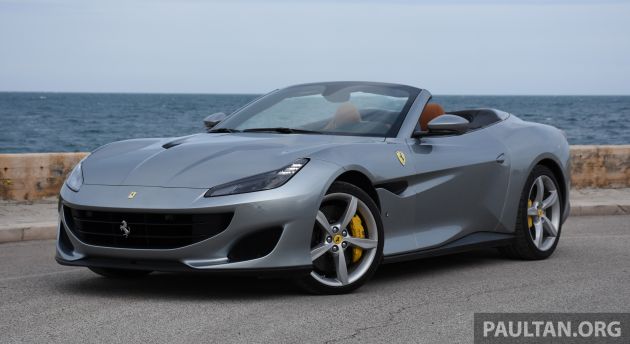
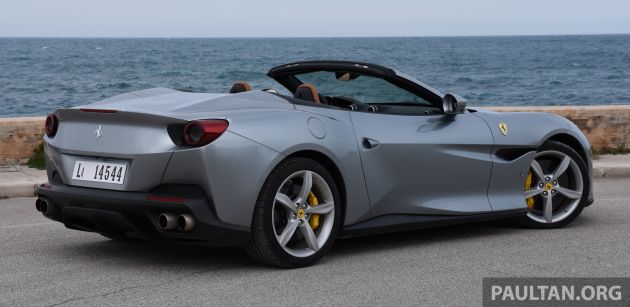








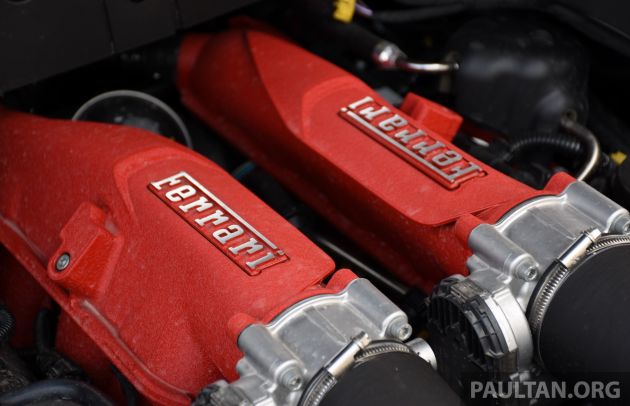



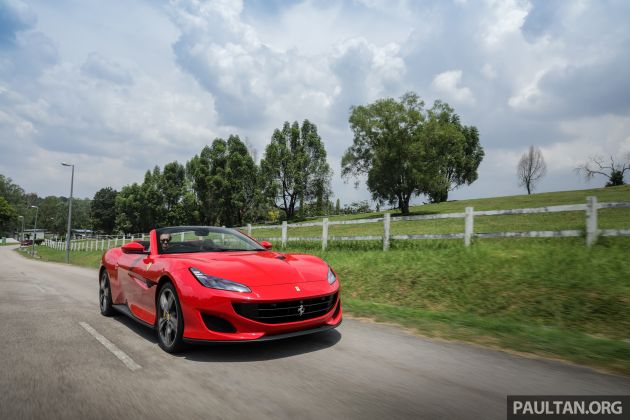






















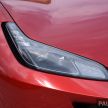
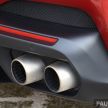



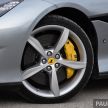
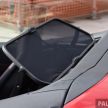
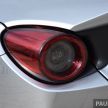
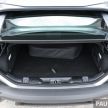


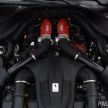




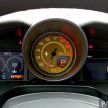
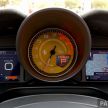

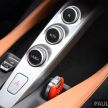





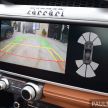

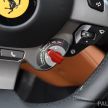
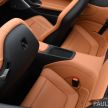


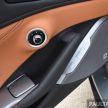














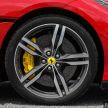
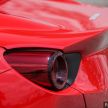
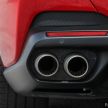












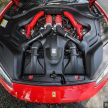








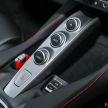
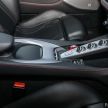
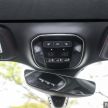
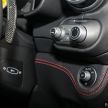
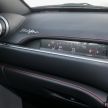

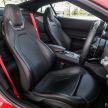

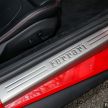

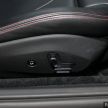



At 1/3 of Portofino’s price, Lotus Evora the better all rounder everyday sportscar.
You better just keep quiet if you don’t know what you’re talking about.
Agreed
1mil RM car and they can’t cleanly tear away the blue protect film from the sidesteps.
The smiley intake reminds me of past Peugeot cars.